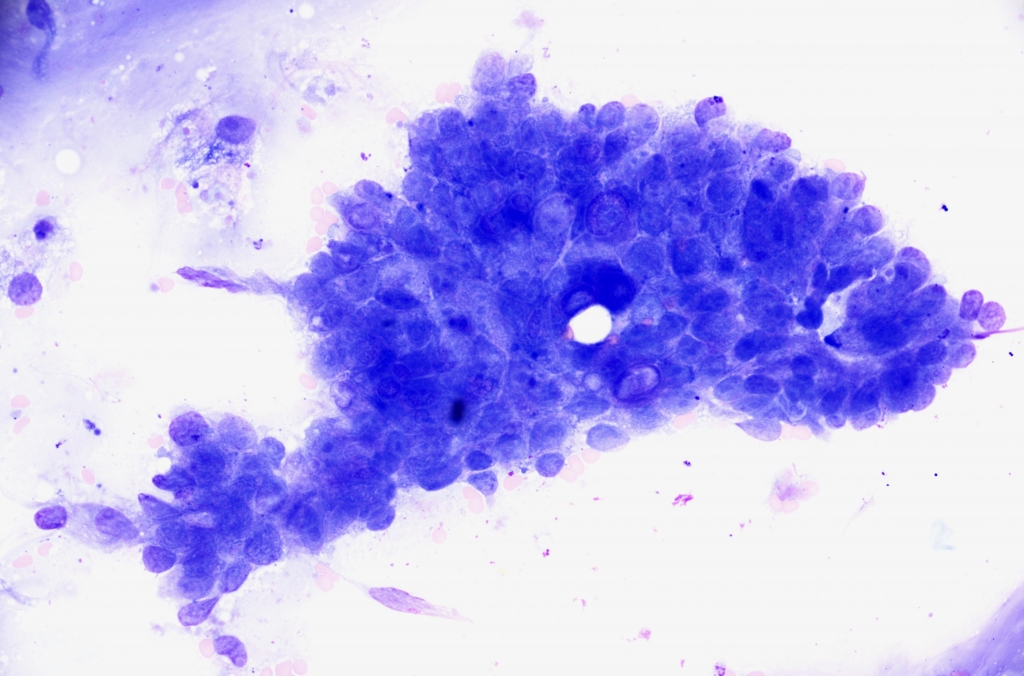
Ultrasound-guided Percutaneous Fine Needle Cytology Moderately Effective At Retrieving Clinically Useful Samples From GI Lesions
A new study, published in the latest issue of the Journal of Small Animal Practice (JSAP), found that ultrasound-guided fine-needle cytological biopsies (FNCB) of gastrointestinal masses provided a clinically useful sample in two thirds of cases, particularly when more slides were provided to the cytologist and thicker lesions were sampled.
The study titled “Assessment of the clinical usefulness of ultrasound-guided cytological specimens obtained from gastrointestinal lesions in dogs and cats” retrospectively reviewed GI cytological samples obtained by ultrasound-guided FNCB of 25 dogs and 19 cats from a single institution between February 2014 to August 2016. The aim of the study was to assess factors that may influence the clinical usefulness of submitted cytological samples collected from gastrointestinal lesions by ultrasound-guided percutaneous FNCB. Ultrasound-guided FNCB included a combination of FNI (non-aspiration) and FNA techniques, as the specific technique could not be determined retrospectively.
Clinical records were evaluated to obtain historical data, clinical findings, diagnostic results and patient outcomes. Clinically useful samples were defined as smears with sufficient cell yield and preservation to allow at least a tentative cytological diagnosis of the lesion character or pathological process. Factors that may have influenced the retrieval of a clinically useful sample were assessed and included lesion location, sonographic lesion thickness, loss of or alteration to intestinal layer conspicuity on ultrasound, and the number of slides submitted to the cytologists. The thickness of lesions was further categorised as either a mass (≥20 mm thickness) or a thickening (<20mm).
Dr Robert Turner, Registrar in Veterinary Radiology at the University of Melbourne and corresponding author for the paper said: “Of the submitted cytological samples, 68% (30/44) were considered clinically useful, including 11 of 18 from the stomach, eight of 12 from the small intestine, five of six from the ileocaecal junction and six of eight cases from the colon.
“The study found that both increasing lesion thickness and number of slides submitted to the cytologists were positively associated with the odds of obtaining a clinically useful sample. In a multivariable logistic regression model, some evidence was obtained that these factors were related, but the available data was insufficient to precisely estimate their combined effect.”
Nicola Di Girolamo, Editor of JSAP concluded: “The results of this study indicate that ultrasound-guided percutaneous cytology is moderately effective at retrieving clinically useful samples from GI lesions. Future research including larger, prospective studies would help to ascertain safety of this diagnostic technique, potential inter-operator variability, as well as a pragmatic comparison in terms of patient outcomes with the current standards for diagnosing GI lesions.”
The full article can be found in the February issue of the Journal of Small Animal Practice and can be read online here: https://www.onlinelibrary.wiley.com/doi/10.1111/jsap.13260.
The Journal of Small Animal Practice is published monthly and access to articles is free for BSAVA members. For information on how to become a BSAVA member visit https://www.bsava.com/Membership/Member-categories
Do you want to improve your cytology skills? Why not join experts Butty Villiers and Paola Monti at BSAVA’s Virtual Congress (25 to 27 March) for a blended interactive module. We are starting with a couple of pre-recorded lectures covering the theory and practice of cytology then live discussions on improving our cytology in practice and the challenges we face in diagnosing (or excluding) cancer will follow. Additional resources will be provided to take back to your practice laboratory to help you deliver better cytology for your patients. Find out more here.
1R.B.S. Turner, R Liffman, A.P. Woodward, C.Beck, N. Courtman and J.R.S. Dandrieux. (2021) Assessment of the clinical usefulness of ultrasound-guided cytological specimens obtained from gastrointestinal lesions in dogs and cats. Journal of Small Animal Practice, 62 (2). Available at: https://www.onlinelibrary.wiley.com/doi/10.1111/jsap.13260
More from BSAVA
- Veterinarians are frequently prescribing metronidazole in contradiction to antimicrobial use guidelines, new study finds
- BSAVA to champion clinical research at BVA Live 2026
- Nominations open for the 2026 BSAVA Awards
- BSAVA PetSavers awards funding for eight new clinical research grants
- BSAVA launches Rover: A groundbreaking AI tool for veterinary professionals

 5 years ago
5 years ago  1485 views
1485 views

 3 weeks ago
3 weeks ago